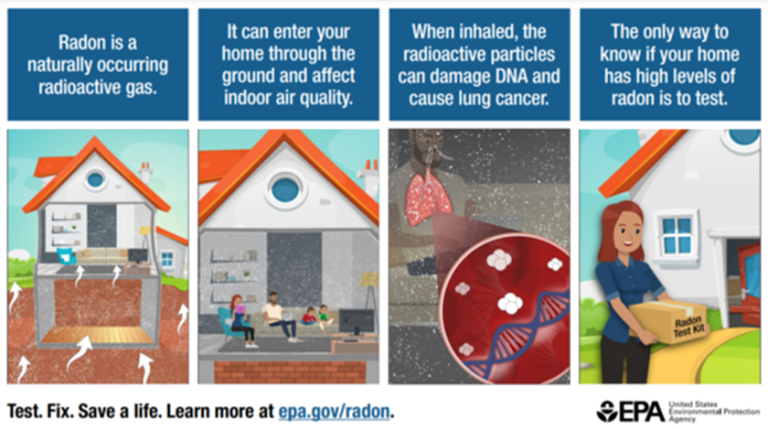Request Your Radon Test.
- Radon Testing: Radon is the leading cause of lung cancer among non-smokers in the U.S. It is a naturally occurring radioactive gas that can enter a home through cracks and openings in floors and walls in contact with the ground. Testing your home is simple and inexpensive. Learn more about Radon y calling 786-800-4598.

LIVING IN A HOME WITH A RADON REDUCTION SYSTEM.
- Maintaining Your Radon Reduction System Similar to a furnace or chimney, radon reduction systems need occasional maintenance. Suppose you have a fan-powered (or active) system. Then it would help to check your warning device regularly to ensure the system works correctly. Retesting your home at least every two years to keep radon levels low is a good idea. Remember, the fan should NEVER be turned off; it must run continuously for the system to work correctly. The filter in an HRV requires periodic cleaning and should be changed twice a year. Also, the vent that brings fresh air in from the outside must be inspected for leaves and debris. A heating, ventilating, and air conditioning professional should check the ventilator annually to ensure the airflow remains properly balanced. HRVs used for radon control should run all the time.
Required Testing
- Required Testing should be conducted if you remodel your home or make major structural changes. Converting an unfinished basement area into a living space requires a radon test.
- Suppose you are planning to add a new foundation for an addition to your home. Ask your radon contractor what measures should be taken to ensure reduced radon levels throughout the home. After you remodel, retest in the lowest lived-in area. To ensure the construction did not reduce the effectiveness of the radon reduction system.
BUYING OR SELLING A HOME?
- If you are buying or selling a home and need to decide about radon. Consult EPA’s “Home Buyer’s and Seller’s Guide to Radon.” If you are selling a home that has a radon reduction system. Inform potential buyers and inform them about your system’s operation and maintenance. Suppose you are building a new home, consider that it is almost always cheaper. To build radon-resistant features into new construction than fixing an existing home with high radon levels. Ask your builder if he or she uses radon-resistant construction features.
- New homes with radon-resistant features should be tested after occupancy to ensure radon levels are below four pCi/L.

 786-800-4598
786-800-4598 info@uhsmold.com
info@uhsmold.com